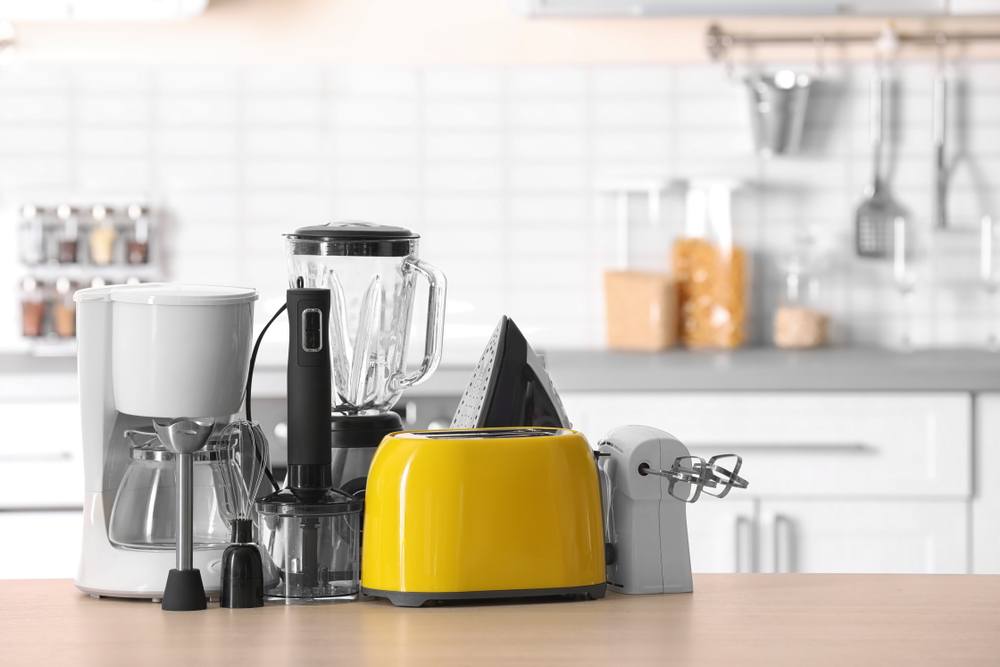5 Ways Airbnb Owners Can Create an Energy-Efficient Home
With an average of two million people staying in an Airbnb every night, it’s no surprise that renting your home out to travelers has become a popular way to make additional revenue.
But you don’t want that extra income to be depleted by guests who leave the lights burning around the clock.
Luckily, there are things you can do to manage those expenses. From easy fixes you can do right now to high-tech ways to turn your house into an automated smart home, these five tips will limit electricity use and keep costs down—no matter who stays in your home.
1. Control Your Temperature
Nearly half of a home’s monthly energy usage is related to heating and cooling, so keep your heating, ventilation, and air conditioning (HVAC) system well maintained.
Even when these systems are in tip-top shape, however, if all the air is leaking out of your home, you’ll see the impact on your utility bill. Use weather stripping to seal windows, install quality door sweeps, and repair any broken glass or damaged wood frames. Thermal curtains and shades can reduce the amount of heat transferred through windows and keep the house cooler in the summer by blocking sunlight.
You can further help your guests stay comfortable and efficient by switching ceiling fans to run counter-clockwise in summer to push air downward and clockwise in winter to pull air upward and circulate warmth.
If you want even more control, consider installing a smart thermostat that lets you make changes from your phone or laptop. Airbnb has a partnership with Nest, though other brands could work just as well. You can warm or cool the house in advance of your guests arriving—and after they leave—without having to run by the property to do so, or you can program a smart schedule to keep temperatures modest through the duration of a guest’s stay.
2. Lighten Up Already
If you haven’t changed over from traditional incandescent bulbs to light-emitting diode (LED) bulbs, it’s an easy way to make a positive impact on your budget. LEDs use less energy, last longer, and produce more natural light than incandescent options.
Homeowners who want to control lights at their property from anywhere can also invest in smart lighting. As the over-achievers of LEDs, smart bulbs connect wirelessly to phone apps (though they can still be controlled by a wall switch), giving you the power to turn out lights left on by a forgetful guest.
3. Get Water Wise
Saving some money on water is as easy as fixing any leaks and taking a trip to the hardware store to pick up some quality low-flow showerheads. Low-flow fixtures may save you up to 60% on your water bill, and the newest versions can deliver the same satisfying shower as a regular showerhead.
Alternatively, a variety of smart showers are on the market that promise to track water usage so you can adjust temperature and flow to save on bills.
Since toilets use the greatest amount of water in a household, moving to a low-flow toilet will also help conserve thousands of gallons annually. You can also make the modifications yourself by installing an adjustable flapper and tank bag to convert your regular toilet into a water-saving model.
There’s also the water heater to consider. While switching to a tankless water heater costs more up front, it uses less energy than a traditional heater and saves money in the long run. Alternately, if you live in a sunny climate, making the investment in a solar water heating system can lead to significant cost savings over time.

4. Be Efficient with Appliances
Energy Star-rated appliances by themselves are generally much more efficient than those not meeting the Environmental Protection Agency’s benchmarks. So if you have the resources to upgrade one or two of your older appliances, it could be a worthwhile investment—especially with so many energy-saving smart appliances on the market.
If an upgrade isn’t in the budget, though, getting your visitors to use non-Energy Star appliances in an efficient way can help. Try posting a few “rules” in your laundry room for guests, asking them to use cold water and shorter cycles when possible to help you save energy, or leave instructions for them to run the dishwasher only once it’s full.
5. Get Wired for Success
If you decide to choose smart home options, your property must have a reliable internet connection with speeds able to meet the needs of the various devices. It can take up to 2.5 Mbps to keep most smart home security systems running smoothly, and even more for multiple smart home devices.
A smartly wired home combined with sensors, a reliable connection, and efficient smart tech will also allow you to set up rules and commands to reign in energy use, such as turning on lights only if there’s detectable activity in a room. That way, your home will work with you to keep costs and energy use down as much as possible.
No matter whether you go low-tech or high-tech, there are plenty of ways to keep your Airbnb guests happy and comfortable without eating up the home-sharing profits paying expensive utility bills.
Author Bio:
Alice Williams
Alice is a freelance writer covering topics on tech, business, and the home. She is passionate about condensing difficult to understand information into actionable advice for readers.


